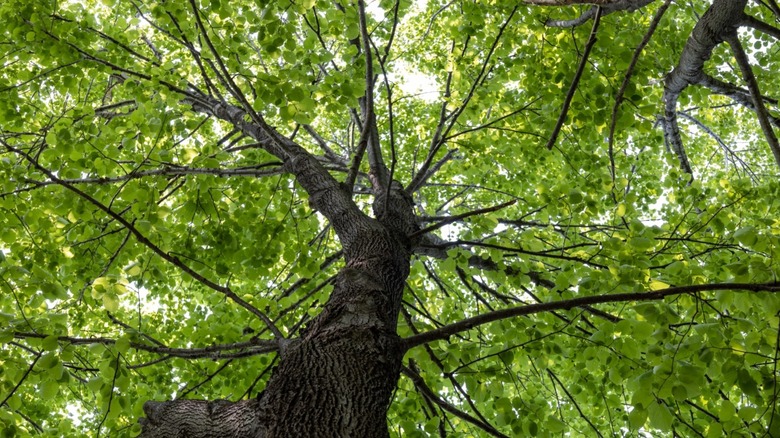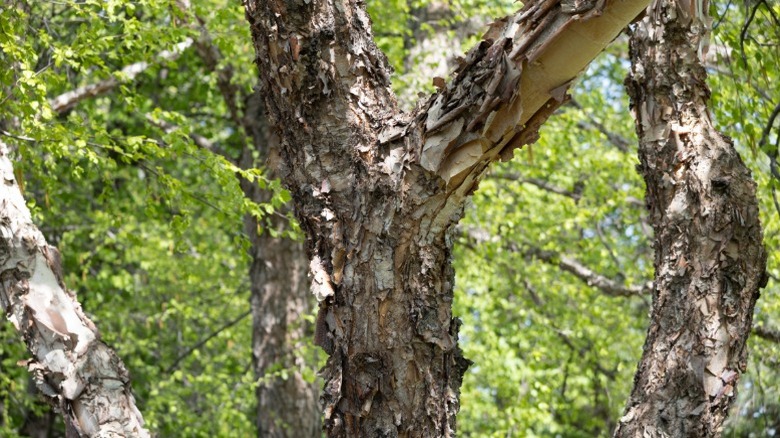Add Some Extra Shade To Your Yard By Planting This Large Tree
If you want to add shade to your yard, but don't want to wait the many years that it takes for an oak tree to reach maturity, consider the mighty river birch (Betula nigra). It's the type of deciduous tree that will not take forever to reach a mature height — an ideal trait for a shade tree. A native of North America, particularly the eastern U.S., the river birch aptly grows near rivers and floodplains. It also thrives in either full sun or full shade. Plus, growing river birch is a simple hack to get birds to flock to your yard, with its seeds being a popular attraction for songbirds.
This tree typically reaches 60 to 80 feet at its tallest. And its branches can reach 20 to 50 feet wide. Each year, its growth rate ranges between one and a half to three feet, with younger river birches growing faster. In its ideal habitat, the river birch thrives, which means it's a great shade option for a moist area of your property such as a low spot. This native tree can live between 50 and 75 years, so planting a river birch is a long-term investment for your property. If you're looking for a shade tree species for an outdoor update that adds serious value to your home, the river birch combines the best in beauty and adaptability.
An adaptable and beautiful shade tree
Not only is the river birch a quick-growing choice, it can be planted in a variety of situations, ranging from well-drained soil to flooded yards. While this tree prefers moist conditions, naturally occurring on stream and riverbanks, river birch also does well in urban environments. Its roots can tolerate low oxygen and poorly-draining soil, a common issue of urban yards. And if you're planning on growing this fast-growing shade tree in your lawn, consider shade-loving perennials to brighten up shaded areas of your garden, as well. You'll want to choose plants that also love moist soil conditions, like maidenhair fern (Adiantum pedatum) or cinnamon fern (Osmunda cinnamomea).
A river birch will provide extra shade in your yard along with displaying an array of beautiful foliage and bark throughout the seasons. This species of birch tree changes throughout the seasons, with bold green foliage in the spring and summer giving way to pretty yellow leaves in the fall. Even the bark of the river birch offers visual interest, with young trees featuring paper-like, reddish-brown bark. Every year the bark peels back to show the inner area, but the layers remain. The result is a ragged, but beautiful look in the winter, with an interplay of dark and light bark. As this shade tree matures, you will notice smoother gray branches with dark bark on the trunk.

